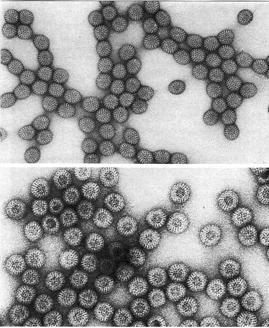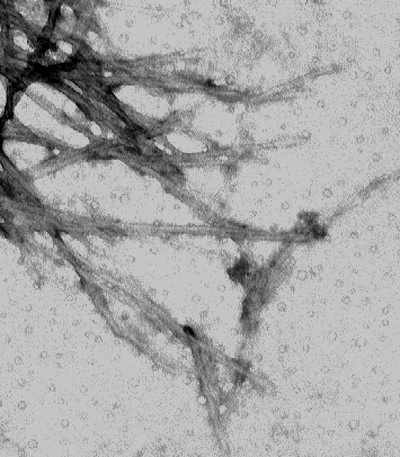Visualization of Viral Particles by Negative Staining Electron Microscopy
Visualization of Viral Particles by Negative Staining Electron Microscopy
Electron microscopy is a useful tool to examine virus morphology. A negative staining technique uses heavy metal salts to enhance the contrast between the background and the virion's image. This is a very simple and direct technique. Pelleted viral particles are resuspended in distilled water. A drop of viral suspension is placed on a petri dish. A Formvar-coated EM grid is placed Formvar side down on top of the virus drop for approximately 1-3 minutes. The grid is removed, blotted with filter paper and placed onto a drop of 2.0% phosphotungstic acid (PTA), pH 7.0, for one minute. The excess PTA is removed, and the EM grid can now be examined and photographed for EM.
 Negative stain of rotavirus (Ref: Palmer, E.L., Martin, M.L.: Electron Microscopy in Viral Diagnosis, pg. 77, CRC Press, Inc., 1988.)
Negative stain of rotavirus (Ref: Palmer, E.L., Martin, M.L.: Electron Microscopy in Viral Diagnosis, pg. 77, CRC Press, Inc., 1988.) Negative stain of alpha synuclein (Dr. Howard Federoff's research group)
Negative stain of alpha synuclein (Dr. Howard Federoff's research group)